It’s one of the most amazing arches in the world, and one of the most fascinating landmarks in Rome.
In this post, you’ll discover the ultimate list of facts about the Arch of Septimius Severus, a triumphal arch dating back to the 3rd century!
1. It’s located in the historical center of Rome
The Arch of Septimius Severus is located in the northwest end of the Roman Forum, the marketplace and most important square of Ancient Rome.
It stands near the foot of Capitoline Hill, one of the 7 hills that Rome was built on. It also stands right next to the ruins of the oldest and more important large temple of Ancient Rome called the “Temple of Jupiter Optimus Maximus,” of which the first version was dedicated in 509 B.C.
Another important Ancient Roman monument is the Column of Phocas which stands just east of the arch but was built nearly 400 years later in 608 A.D.

2. It’s one of the tallest arches of the empire
Apart from being one of the best-preserved arches of Ancient Rome (there are many), it’s also one of the tallest. The arch stands 23 meters tall (75 feet) and is about 25 meters (82 feet) in width.
To give a comparison, other tall arches in the vicinity of the Arch of Septimius Severus are the Arch of Constantine, which is located right next to the Colosseum and stands 21 meters (68 feet) tall, and the Arch of Titus stands just 15 meters (49 feet) tall.
This is still much less tall than some of the modern triumphal arches, such as the Arc de Triomphe in Paris, which is about double the height of this one.
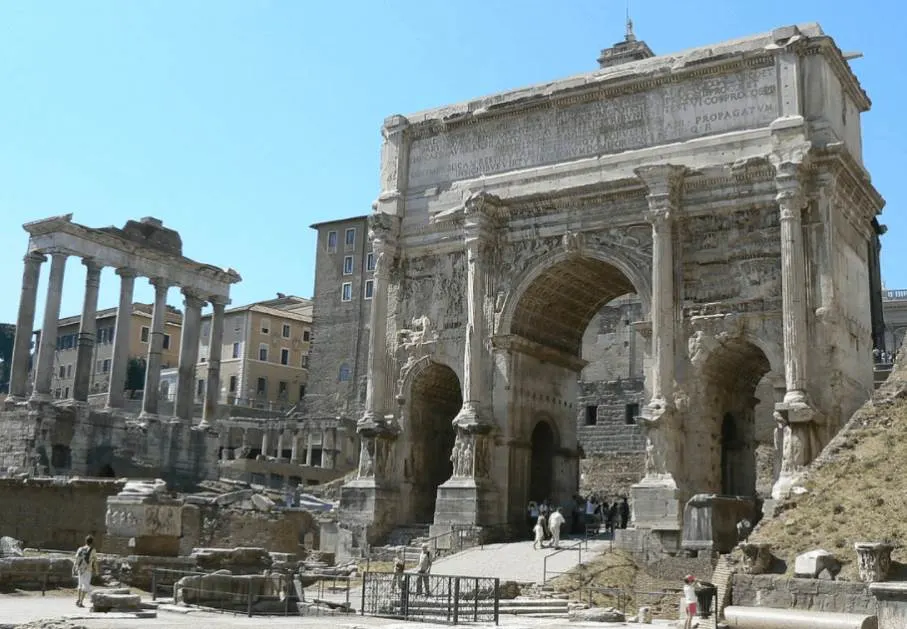
3. It was built in honor of a Roman Emperor
As you might have expected, the arch was constructed in honor of Roman Emperor Septimius Severus. he ruled over the empire from 193 until he died in 211 A.D.

Septimius Severus is well-known for his invasion of “Caledonia” in 209 A.D., which is modern-day Scotland, with a massive army of 50,000 Roman soldiers. He fell ill the year after so the campaign was halted.
If he hadn’t fallen ill, Scotland might have become another province of the Roman Empire!
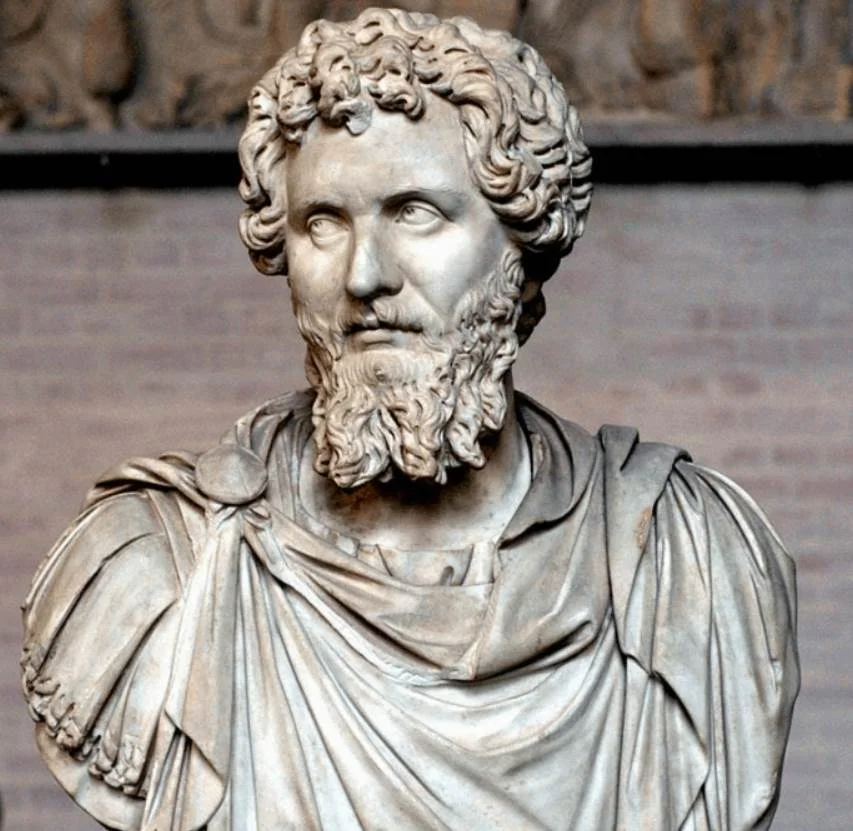
4. Septimius Severus ruled Rome with his two sons
He was the sole ruler of the Roman Empire for just 5 years because was joined by his son Caracalla in the year 198 A.D. This was repeated when his other son Geta became co-ruler as well in the year 209 A.D.
This means that he founded the last Dynasty of the Roman Empire called the “Severan Dynasty,” which would rule the Empire from 193 until the year 235 A.D.
5. One of the sons ended up being carved out of the arch
One of the most interesting facts about the Arch of Septimius Severus is that Geta, who was included in all of the decorations on the arch, was carved out of it by his brother Caracalla.
The reason is that Caracalla had his brother Geta assassinated in the year 212 A.D. to become the sole ruler of the empire and ordered a “damnatio memoriae” upon Geta. This means that he was erased from history and removed from all public buildings, including this arch!
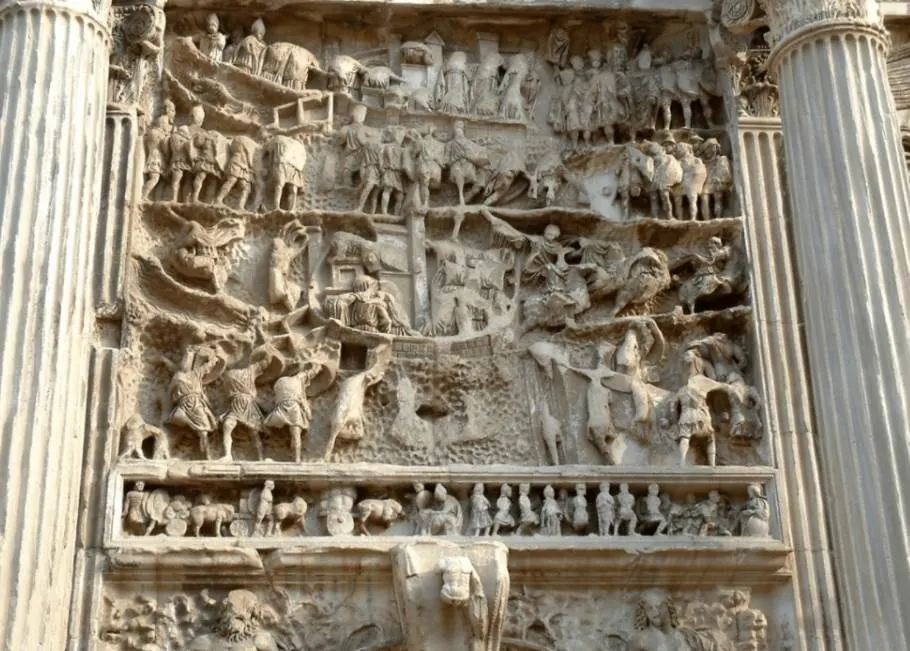
6. It commemorates two great victories of the Roman Army
So what do the reliefs on the arch depict?
The arch was completed in the year 203 A.D. and depicts two of the great victories of Septimius Severus against the Parthian Empire, which can be considered modern-day Iran.
These victories happened in the years 194 to 195 A.D., and 197 to 199 A.D.
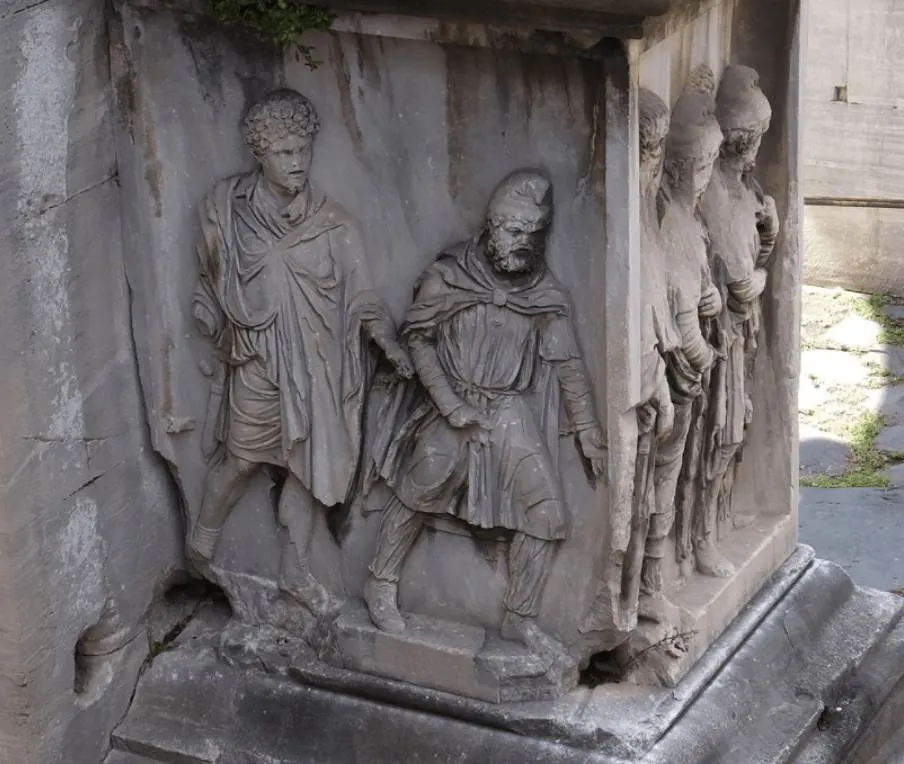
7. The arch is decorated with 2 sets of reliefs
The arch is full of self-glorifying reliefs related to the victories of the Romans over the Parthians, which is what the arch was all about. Another distinct feature is the 4 columns which rest on piers.
These include two sets of reliefs. One of the sets is located on the 4 faces of the attic of the arch, while the second set is located on the 8 inner faces of the archways.
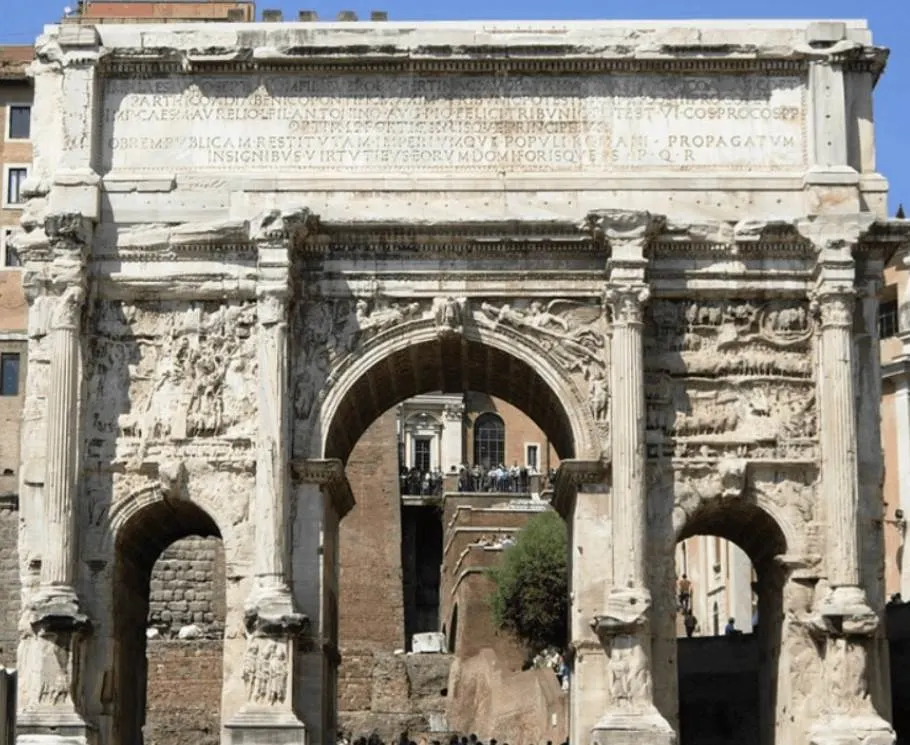
8. Statues used to decorate the top of the arch as well
The reliefs weren’t the only decorations on the arch as they used to be topped with multiple statues of the Emperor and his sons, either on foot or riding horses.
The centerpiece of the top section of the arch was a massive quadriga, a chariot driven by the emperor pulled by 4 horses.
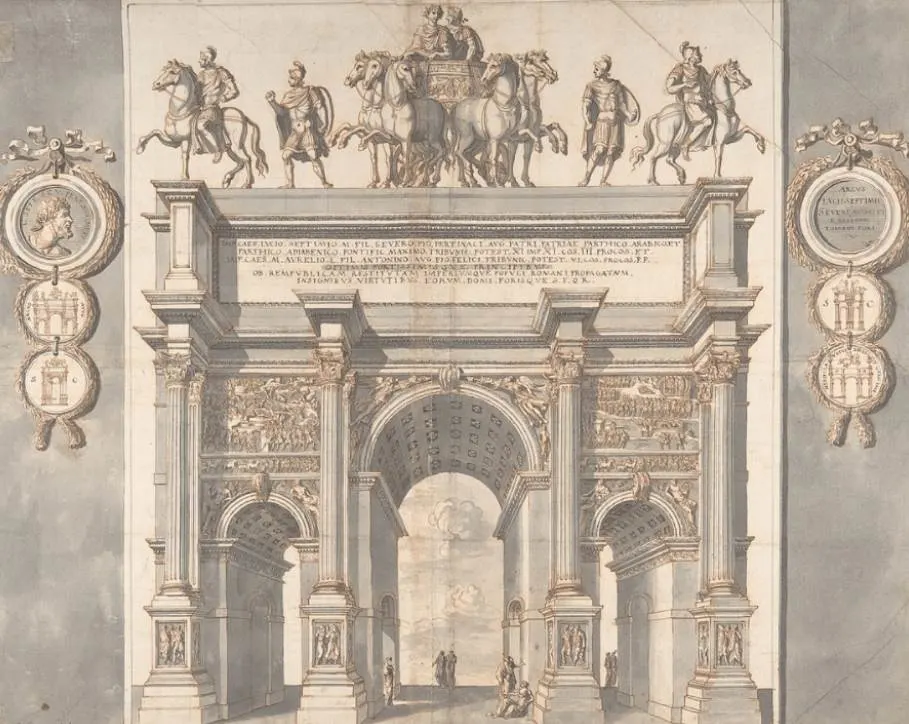
9. There used to be steps going up to the arch in Roman times
One of the most fascinating facts about the Arch of Septimius Severus is that in Roman times, it used to be elevated and accessible through a flight of steps.
Over the centuries, however, the ground level of the Roman Forum was raised because of erosion so the steps were eventually removed.
10. Traffic going through the arch caused some damage
What’s even more remarkable is that a road was constructed which ran through the arch as early as the 4th century A.D., which isn’t too long after the arch was completed.
This road was used until well into medieval times, so you can expect some accidents happening over the centuries. Some of the damage caused by vehicles bumping into the arch can still be seen at the base of its columns.
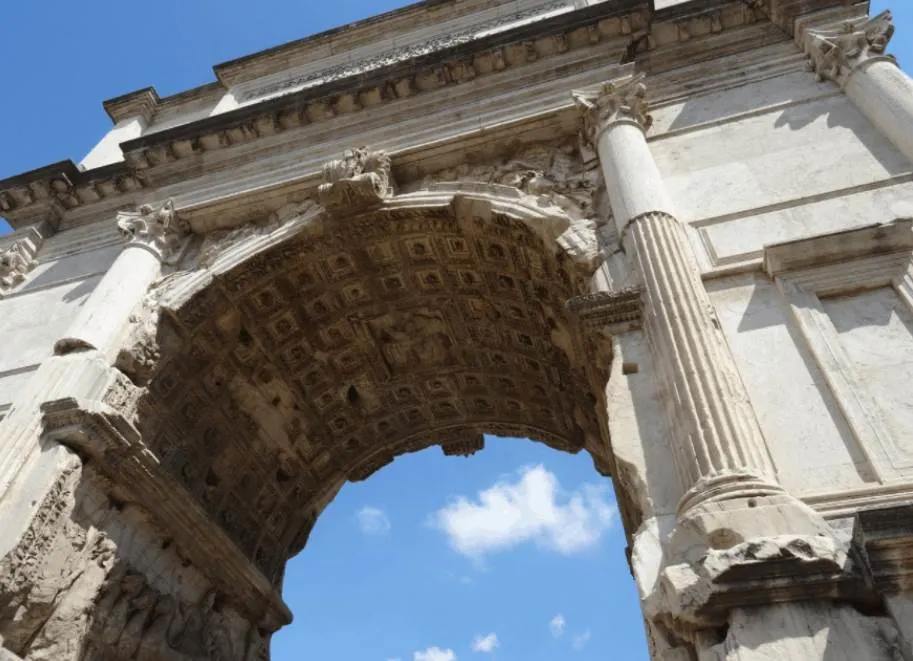
11. Why is the Arch of Septimius Severus so well-preserved
Very few of the buildings in the Roman Forum still stand. All that remains of most of the temples and other ancient buildings, apart from some exceptions, are some columns and the rest lay in ruins.
The reason that the arch has been preserved so well is two-fold:
- It used to be part of a medieval church called the “Santi Sergio e Bacco al Foro Romano.” This is also the reason that the Pantheon in Rome has been preserved so well.
- Half of the arch used to be the property of a rich Roman family called the “Cimini Family.” They helped to preserve the ancient monument as well.
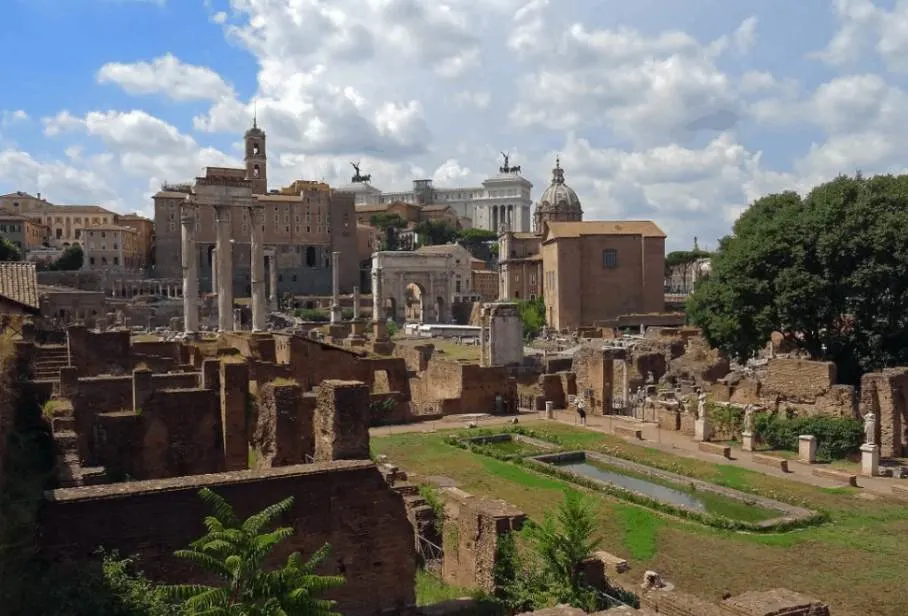
12. The Cimini family built a tower on top of it
In the Middle Ages, the statues of the Roman Emperors that covered the top section of the arch had long been removed as the arch was transformed into a section of a church.
To make good use of the part of the arch they owned, the Cimini family built a stronghold next to it called “Claustrum Cimini,” and put a tower on top of the arch which served the purpose as a watchtower.

13. By the 18th century, only half the arch was still visible
Did you notice in the drawing above that the arch isn’t fully visible?
This isn’t a mistake because in medieval times, the rubble accumulated and only about half of the arch remained visible. This is visible in a painting by Canaletto, painted in the year 1742.

14. This is what the inscription on the arch reads
The arch was dedicated to Emperor Septimius Severus. As with many other monuments of Ancient Rome, this was marked with an inscription on top of the arch which reads:
IMP · CAES · LVCIO · SEPTIMIO · M · FIL · SEVERO · PIO · PERTINACI · AVG · PATRI PATRIAE PARTHICO · ARABICO · ET PARTHICO · ADIABENICO · PONTIFIC · MAXIMO · TRIBUNIC · POTEST · XI · IMP · XI · COS · III · PROCOS · ET IMP · CAES · M · AVRELIO · L · FIL · ANTONINO · AVG · PIO · FELICI · TRIBUNIC · POTEST · VI · COS · PROCOS · (P · P · OPTIMIS · FORTISSIMISQVE · PRINCIPIBUS) OB · REM · PVBLICAM · RESTITVTAM · IMPERIVMQVE · POPVLI · ROMANI · PROPAGATVM · INSIGNIBVS · VIRTVTIBVS · EORVM · DOMI · FORISQVE · S · P · Q · R
Latin inscription on the Arch of Septimius Severus.
This translates to:
To the emperor Caesar Lucius Septimius Severus Pius Pertinax Augustus Parthicus Arabicus Parthicus Adiabenicus, son of Marcus, father of his country, Pontifex Maximus, in the eleventh year of his tribunician power, in the eleventh year of his rule, consul thrice, and proconsul, and to the emperor Caesar Marcus Aurelius Antoninus Augustus Pius Felix, son of Lucius, in the sixth year of his tribunician power, consul, and proconsul (fathers of their country, the best and bravest emperors), on account of the restored republic and the rule of the Roman people spread by their outstanding virtues at home and abroad, the Senate and the People of Rome
Engish translation of the inscription on the Arch of Septimius Severus.

